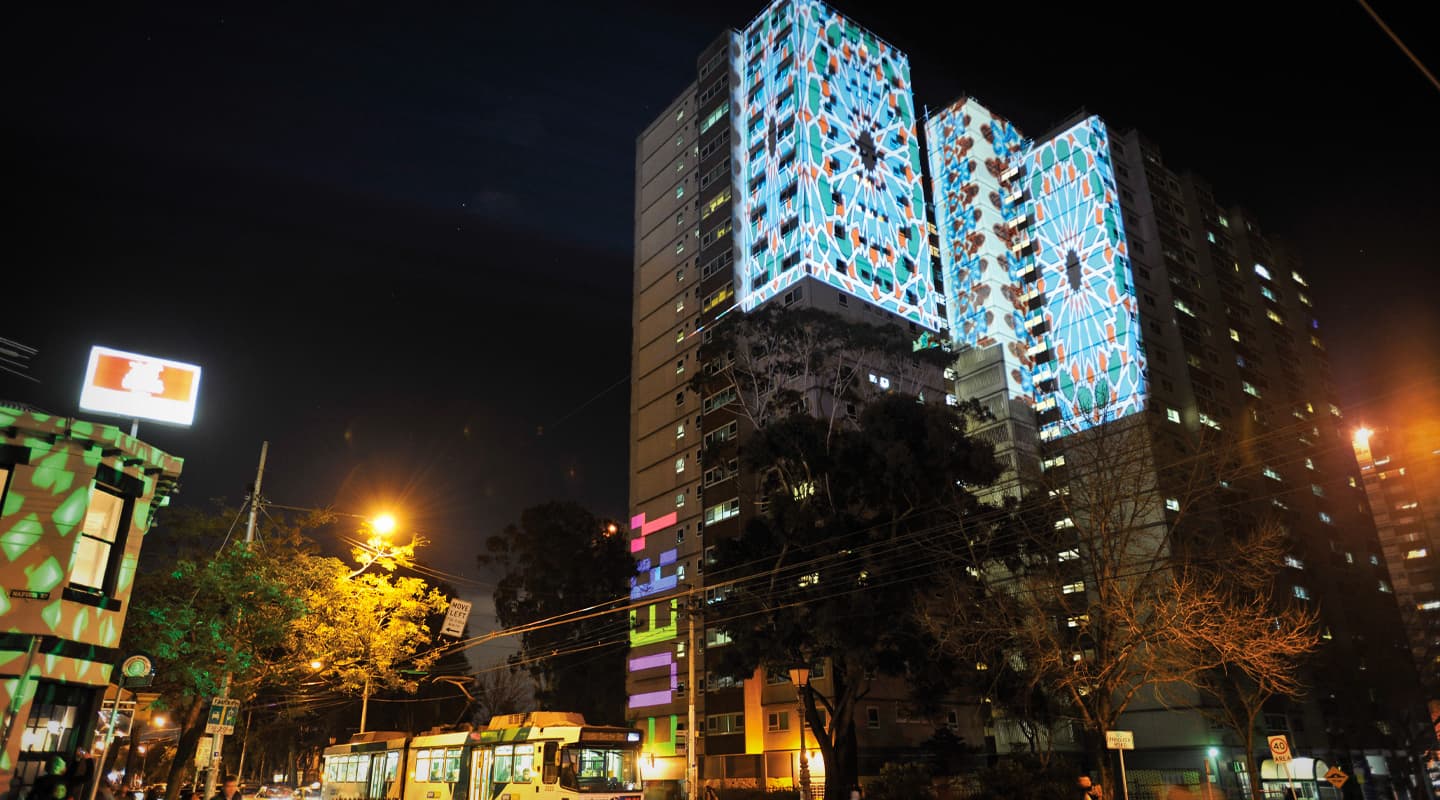
Taking it To The Streets
The Gertrude Street Projection Festival.
Text:/ Matt Caton
Image courtesy Projection Teknik
Large format street projection may not the newest audiovisual medium around, but when it’s done on a scale that literally lights up a kilometre of busy street in inner Melbourne, it’s hard to overlook.
The Gertrude Street Projection Festival took place between July 22nd and 31st this year, and saw an entire 1km stretch of Fitzroy’s Gertrude Street covered in a mass of colour, moving images, quirky art and representations of the street’s long and chequered history. Into its fourth year, the festival is run and organised by the Gertrude Association; a non-profit organisation founded in 2007 by Monique McNamara and Kym Ortenburg with a brief to produce culturally engaging, inclusive and sustainable community art projects.
As the Creative Producer of the event, as well as being a local resident, Kym Ortenburg explains how the idea for the festival came about, “Monique had a creative community project brewing for many a year in response to the changes on the street and the demographic of the area. I wanted to project holograms in the laneways. Our ideas collided and collaborated and together we decided to make it happen.”
The event saw 50 lumino kinetic artworks spread over 29 sites. This included projections onto building facades, laneways, street corners and shop windows, all from discreet and cleverly-hidden projection sources. The aim was to bring together community, celebration and art, as well as expose approximately 5000 people to a series of ‘art interventions’. The community aspect is a very important part of the event, and can be seen within the three-tiered artist hierarchy. The first tier consisted of works from professional visual artists such as Kit Webster, Yandall Walton, Ian De Gruchy, Nick Azidis, Lindsay Cox and Olaf Meyer. The second tier saw contributions from local community groups and residents while the third tier had entries from the general public.
ART VS. SCIENCE
In a project such as this, bridging the gap between artistic concepts and the logistical side of production was very important, and a role undertaken by Olaf Meyer of Multimedia Productions. As the Technical Director of the event, Olaf assisted all artists and curators with architectural mapping and matching content to the specific locations. As well as overseeing issues such as budgeting, security and automation of the equipment, he was also responsible for selecting the right optical features in all of the projectors in terms of lens selection, keystone correction and lens shift.
With most of the projection equipment installed into shops and businesses in Gertrude Street to comply with the hidden spaces theme of the event, it was important that the equipment remained as unobtrusive as possible. Olaf explains, “Part of my role was to liaise with the shop keepers about the impact of the installation in their stores with regard to visual, safety, power consumption and rigging. Finding a balance between the needs of the artist and the venue’s operational requirements was paramount.”
In addition to being Technical Director, Olaf was one of the festival’s featured artists, and certainly had one of the more eye-catching installations. Located high on the Post Office Rotunda on the corner of Brunswick Street, he created a moving 3D depiction of a carousel. “The idea was in response to this year’s hidden theme with the form of the rotunda giving an architectural reference to the idea of the carousel. I made a virtual 3D model of the rotunda from the building’s original blueprints which I sourced from the Victorian building heritage register.”
The virtual 3D model was then superimposed onto the building and 3D features of the model were used to animate computer generated shadows, giving the illusion of a moving light source and other moving elements.
The Atherton Gardens public housing estate not only dominates the streetscape, it became a dominant object for the projection festival with the interactive Sparkle Atherton project from Greg Giannis (at left) and Nick Azidis spectacular coverage of the top 10 floors with mapped large-format (180mm x 180mm) transparencies projected from a 4kW HMI Pani Turbo Scene Projector.
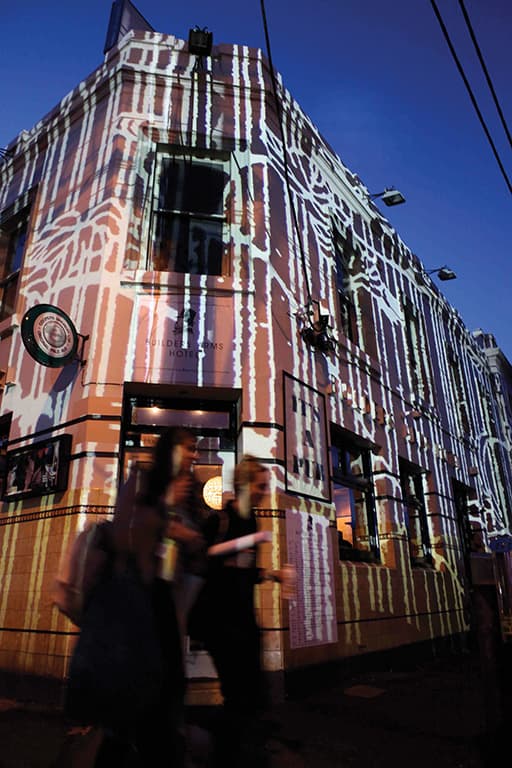

VISUALSYNTH
Developed in the mid 90s when most people were still using tape and a vision mixer for video replay on live performances, Visualsynth allows video streams, effects processes and outputs to be chained and patched on-the-fly without dropping a single frame. Originally an 8-bit video application, on multi-core hardware the render pipeline in the current version supports video up to a film-grade 30-bit depth. Stream control, patching and routing can be driven by a range of control signals that include analogue audio, MIDI, oscillators, Open Sound Control and DMX512. From its initial library of 10 in-built video effects Visualsynth has grown to support hundreds of effects and also supports the vast range of effects from the FreeFrame open video plug-in system.
EQUIPMENT
Most of the large-format projectors were driven from Visualsynth, a media server environment developed in Melbourne by Andrew Baxter with Olaf Meyer. Some of the more established artists used their own media servers, with feature artist Ian de Gruchy using a Dataton Watchout system. Where possible, the smaller projectors were fed from DVD players to keep costs down.
Video was distributed using RGBHV cables. “In general RGB signals whether they are digital or analogue, produce better quality images than DVDs for a number of reasons; mainly that the compression, resolution and dynamic range are all superior and adjustable on a computer-based playback system,” explains Olaf.
Due to the variety in size, scale and intent of the different art installations, a vast range of projectors were used. Many of the smaller installations used NEC LT series multi-purpose projectors and the very smallest used a BenQ MP776. The larger installations used a 10,000 ANSI lumen NEC XT9000, which was often required for long outdoor throws, across streets and when competing with traffic lights and street lights. Aside from the few artists who supplied their own, all projectors and equipment was supplied by Multimedia Events.
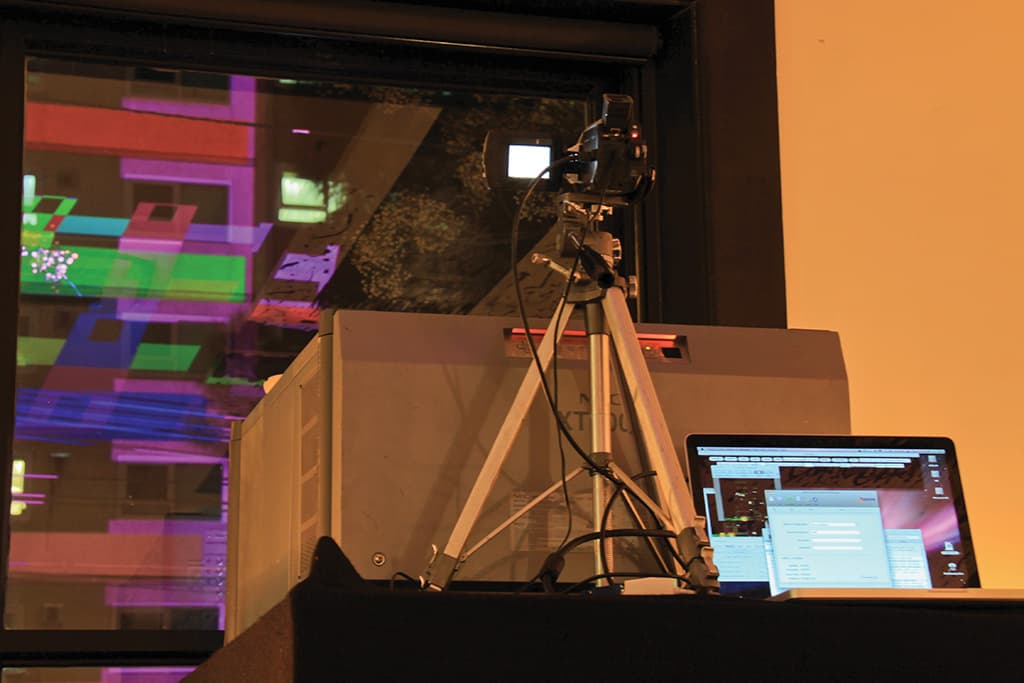
OLD SCHOOL
One of the feature artists that did provide his own equipment was Nick Azidis from Projection Teknik (a joint venture between Nick Azidis, Olaf Meyer, Ian De Gruchy and Kim Ortenburg). Nick covered the top 10 stories of the Atherton Gardens sky rise flats for an opening night feature, as well as projecting onto the facade of the Builders Arms Hotel. What differentiated Nick’s artwork from the rest of the festival was his use of slide projection rather than digital image projection.
For the opening night illumination of the sky rise apartments, Nick used traditional large-format (180mm x 180mm) glass slides in a Pani 4kW Turbo Scenic Projector, having previously mapped the building using a Pani camera obscura. He covered the facade of the Builders Arms Hotel using glass Superslides (40mm x 40mm narrow-mount) in two Vicom Supernova 35mm slide projectors powered by HTI 400W lamps.
“In terms of light intensity and colour brilliance, the illumination from an analogue projector is unlike any other large-scale technology, while also being cost effective compared to other projection technologies,” explains Nick. “I liken it to the time in the 80s when the synthesizer came out and everyone said guitars and drums would go out of style. The guitar and drums continue to have their place, as do analogue projections.”
MR SPARKLE
While there were plenty of artworks to catch your eye while wandering down Gertrude Street, the Sparkle Atherton project was probably the most notable. Projected on the side of a building in the Atherton Gardens public housing estate, artist Greg Giannis developed an interactive and dynamic artwork that encouraged input from local residents. Greg developed software that sat online and allowed the general public to log on and create their own artwork and splashes of colour, which were then periodically projected onto the facade of the building during the festival. His images were projected from an NEC XT9000 located across the street in the Charcoal Lane Restaurant.
With an incredible combination of established artists, supported by an array of community groups such as The Brotherhood of St Laurence, Turning Point, YarraReporter, Maysar, Art Day South, Fitzroy Computer Clubhouse, the Artful Dodgers Studio and of course the Gertrude Association, the Gertrude Street Projection Festival was one of the more dynamic and impressive projects seen in Melbourne for some time. Its popularity was evident from the number of amateur photographers and videographers who converged on the streets, trying to best capture the essence of the artwork. Now with four years behind them, it will be interesting to see what the Gertrude Association produce next year.
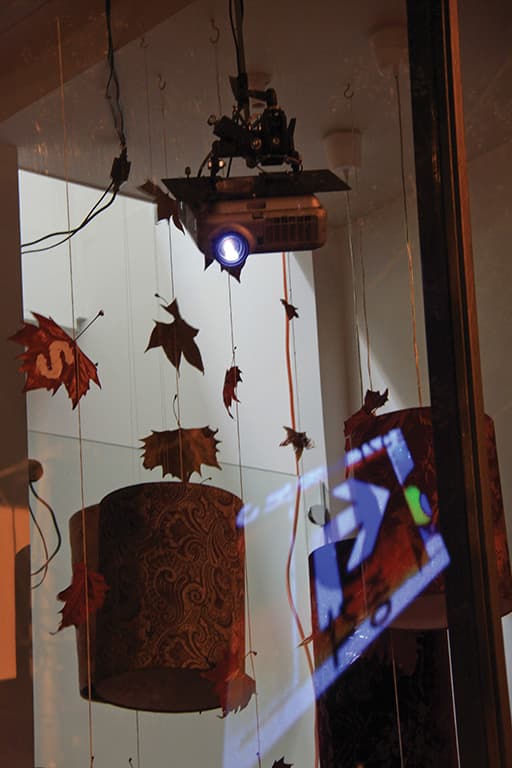
FESTIVAL CREDITS
Creative Producer: Kym Ortenburg (www.thegertrudeassociation.com)
Patron: Ian de Gruchy
Technical Director: Olaf Meyer
Equipment Suppliers: Multimedia Events (www.multimediaevents.com.au)





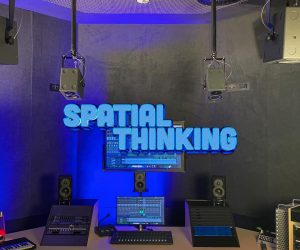

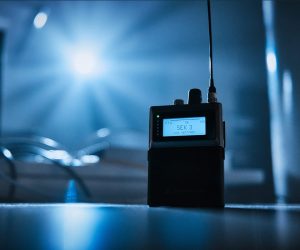


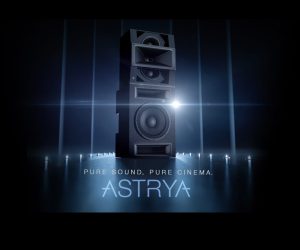
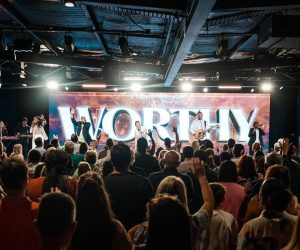
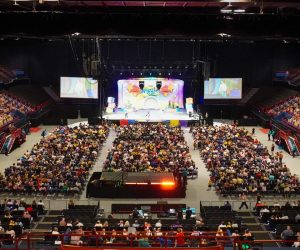


RESPONSES